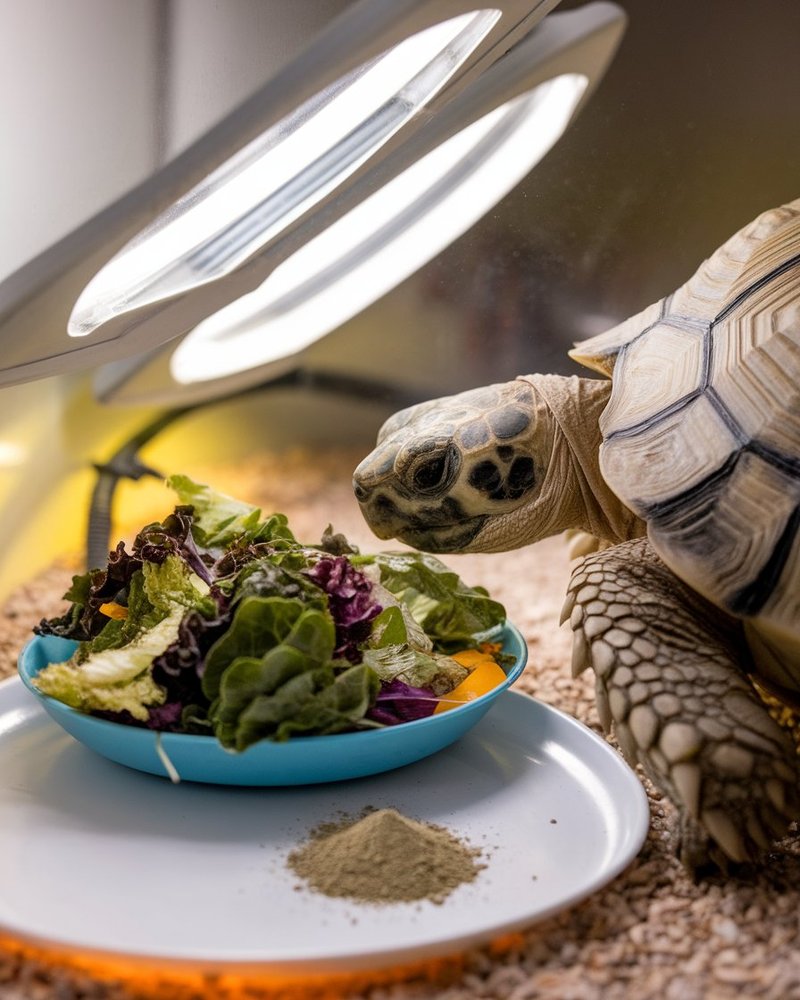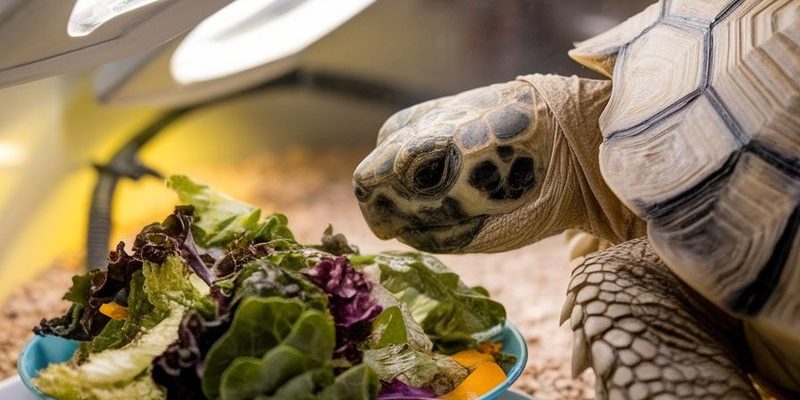
Hermann’s tortoises are primarily herbivorous, meaning they munch on plants, leaves, and flowers. Think of them as the gentle grazers of the reptile world. Their diet plays a crucial role in their growth, health, and overall well-being. By understanding their dietary needs, you’ll not only keep them happy but also help them live longer, healthier lives. Let’s dive into the specifics of feeding your Hermann’s tortoise.
Understanding Their Natural Diet
Hermann’s tortoises are naturally found in Mediterranean woodlands and grasslands. In the wild, they feast on a variety of plant materials. Here’s the thing: replicating this diet at home is key. They primarily eat grasses, weeds, and some flowers. So, when you’re thinking about what to feed your tortoise, consider fresh greens as the cornerstone of their meals.
You might be wondering what specific plants to include. Some great options are:
- Dandelion greens
- Plantain leaves
- Clovers
- Hibiscus flowers
- Thistles
These choices are packed with nutrients and fiber. Keeping a varied diet not only makes meals more interesting but also ensures your tortoise is getting all the necessary vitamins and minerals.
Choosing the Right Greens
Now that you know what types of plants are good for Hermann’s tortoises, let’s talk about selecting the right greens. Freshness is key! Think of it this way: you wouldn’t want to eat wilted salad leaves, right? Your tortoise feels the same way.
When shopping for greens, look for organic options whenever possible. This way, you can avoid pesticides and chemicals that may harm their health. Some ideal greens include:
- Collard greens
- Mustard greens
- Endive
- Swiss chard (in moderation)
You can also try foraging in your backyard or local parks, as long as you’re sure the plants are safe and free of chemicals. Just remember to avoid any toxic plants such as oleander, lilies, or yew.
The Importance of Calcium and Fiber
One crucial aspect of a Hermann’s tortoise’s diet is ensuring they get enough calcium and fiber. Calcium is vital for shell growth and bone health. Without it, your tortoise might develop serious health issues.
To boost calcium intake, you can sprinkle a bit of cuttlebone or calcium powder onto their food. Additionally, providing a variety of high-fiber foods helps with digestion. Here’s where those grass and leafy greens come into play. Their digestive systems are designed to process high-fiber plant material, so don’t skimp on that!
Additionally, you can offer a few hibiscus or roses to add some excitement to their meals. Just be sure these are free from pesticides as well!
Feeding Frequency: How Often Should You Feed Them?
You might be surprised, but Hermann’s tortoises don’t need to be fed every day like some other pets. In fact, it’s often recommended to feed adult tortoises every other day, while younger tortoises may need daily feeding to support their growth.
Here’s a simple guide for feeding frequency:
- Juvenile Hermann’s tortoises: Daily feeding
- Adult Hermann’s tortoises: Every other day
This schedule helps mimic their natural grazing habits. And honestly, you don’t want to overfeed them. Doing so can lead to obesity and other health issues.
Hydration Matters: Don’t Forget Water
While Hermann’s tortoises get a lot of moisture from their diet, fresh water should always be available. You can use a shallow dish for them to drink and soak in. Soaking is important because it helps keep their skin hydrated and supports their overall health.
Consider offering water daily, and make sure to change it regularly to keep it clean. In warm weather, you might even notice them soaking more often, which is absolutely normal.
What to Avoid in Their Diet
Just like we have certain foods to avoid, Hermann’s tortoises have a few dietary no-nos as well. Here’s a quick list of foods to steer clear of:
- High-protein foods like dog or cat food
- Fruits (in excess) due to high sugar content
- Processed or commercial tortoise food
- Meats or animal proteins
These foods can cause serious health issues, including metabolic bone disease. It’s best to stick to the plant-based diet that suits their natural instincts.
Tips for Creating a Balanced Meal Plan
Creating a balanced meal plan may sound daunting, but it doesn’t have to be. Start with a base of leafy greens and then mix in some other plants for variety. Here’s a little meal-planning tip: aim for at least two different types of greens, one flowering plant, and a small bit of calcium supplement.
Additionally, you can create a rotation system for different foods throughout the week. This not only keeps your tortoise interested in mealtime but also ensures they receive a wide range of nutrients.
Let me explain a simple week plan. On Monday and Wednesday, serve dandelion greens with some clover. On Tuesday and Thursday, go for collard greens and plantain leaves. On the weekend, include a few hibiscus flowers.
Reading Your Tortoise’s Signals
Finally, it’s essential to pay attention to your Hermann’s tortoise. Their behavior can tell you a lot about their diet and health. If they seem uninterested in food, it could be a sign of stress or illness. Conversely, if they’re gobbling down their meals, that’s a good indication that you’re on the right track with their diet.
Monitor their weight and shell condition as well. A healthy tortoise should have a smooth and strong shell, while weight loss or deformities can indicate dietary deficiencies.
In wrapping up, feeding your Hermann’s tortoise is all about creating a diet that mirrors their natural habits and provides the right nutrients. By being mindful of what they eat, how often they eat, and keeping their meals exciting, you’ll nurture a happy, healthy tortoise that thrives in your care. Enjoy your journey as a tortoise parent!

